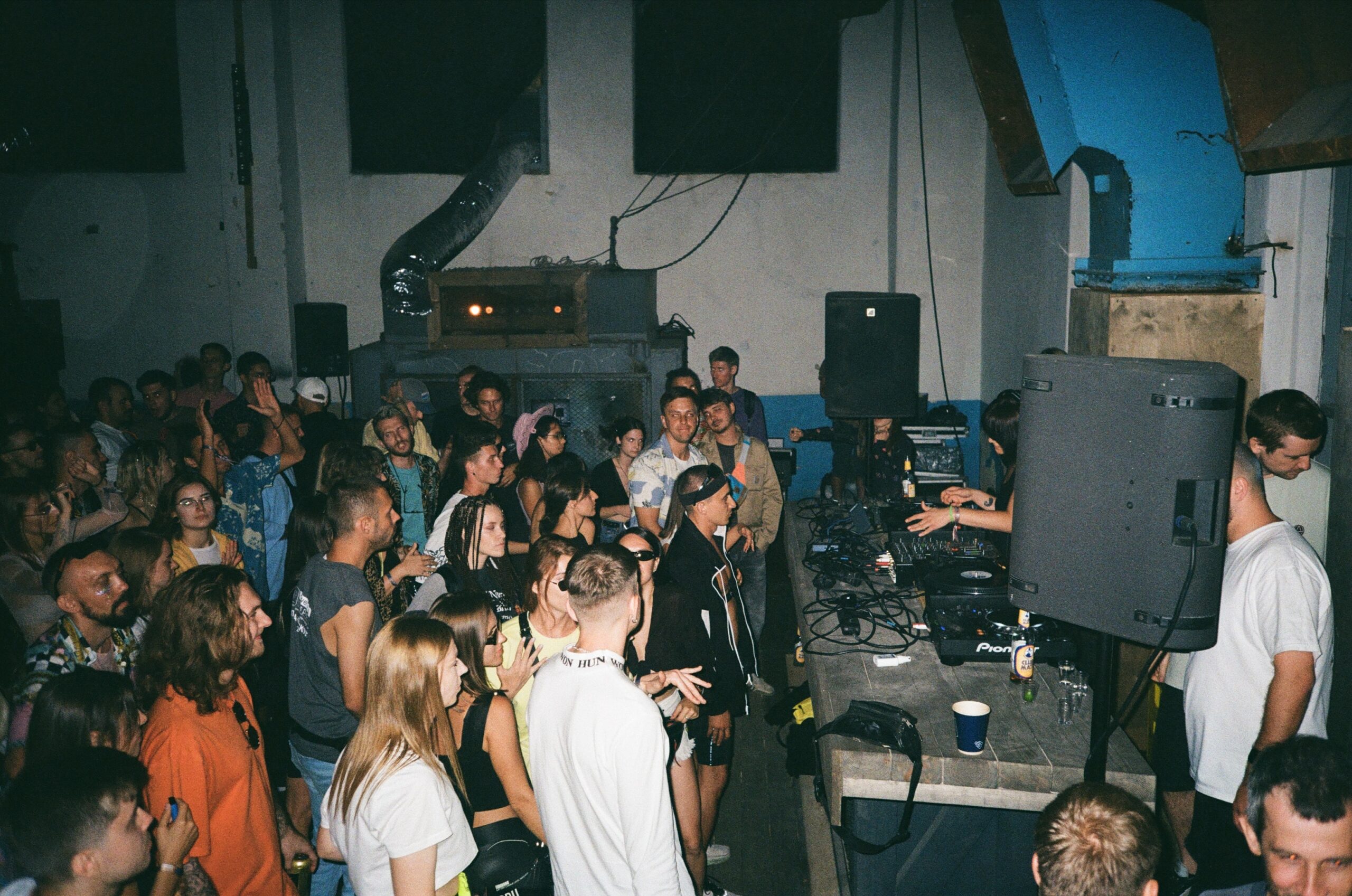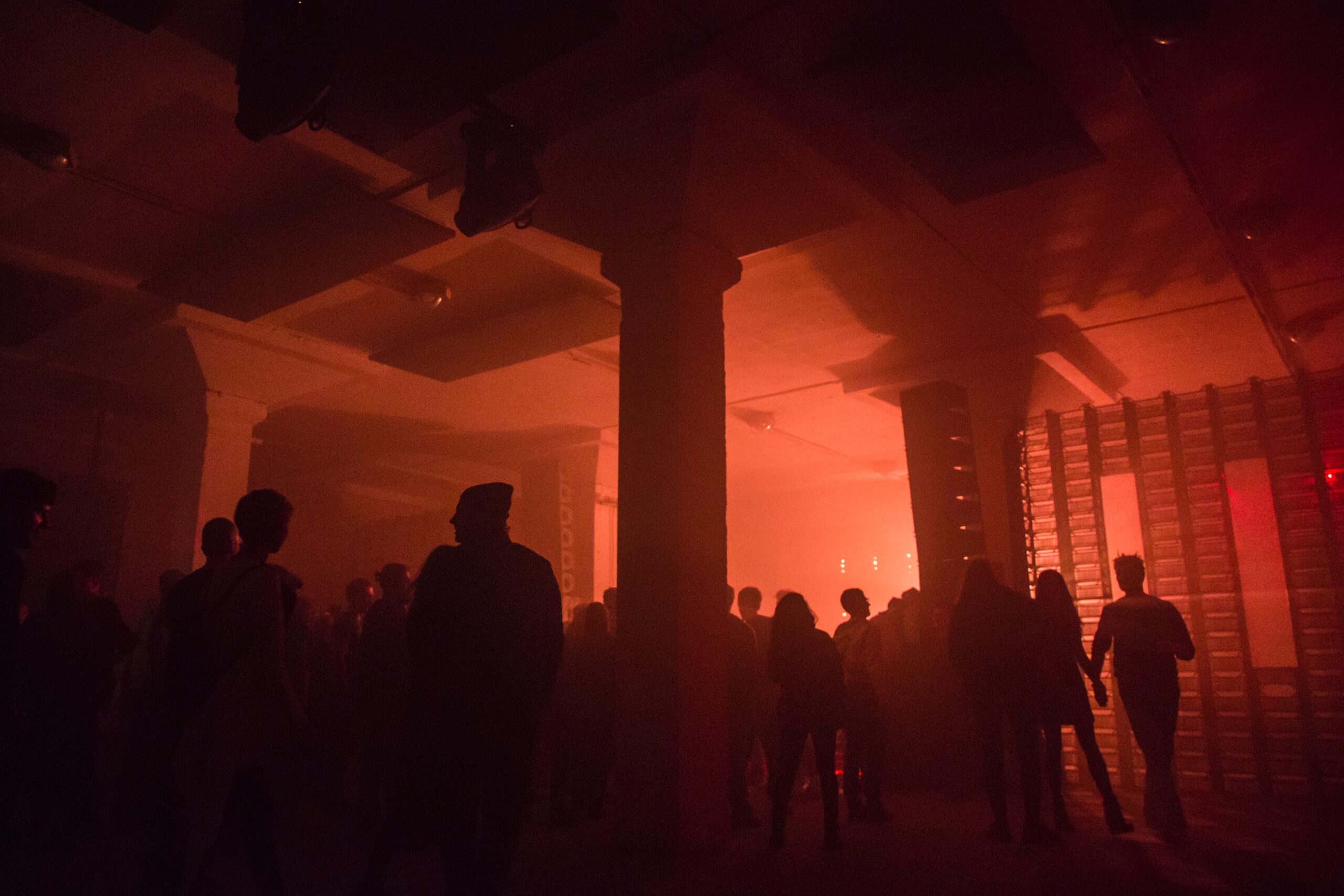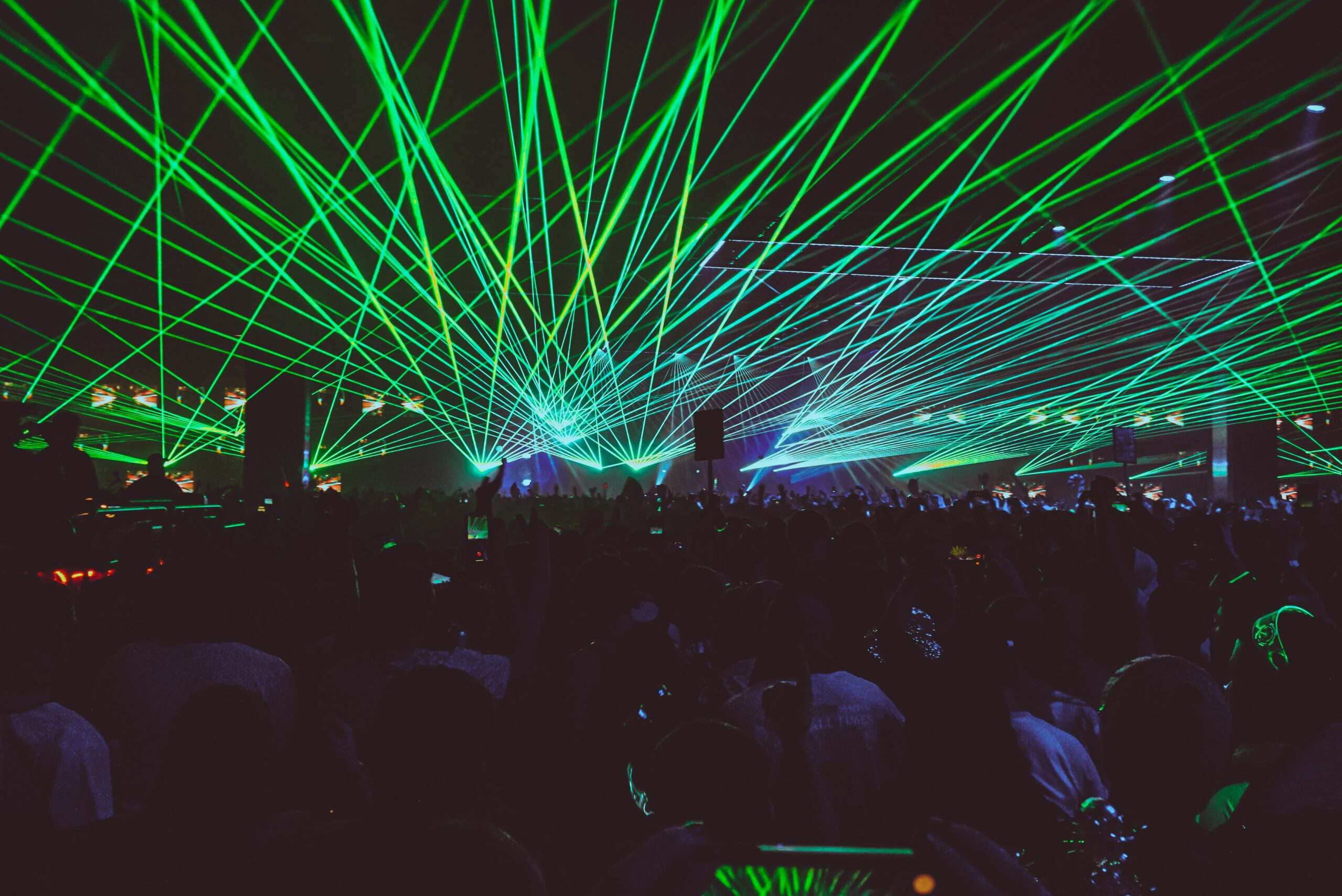The word “rave” has become an oddly polarizing term.
Use it in the wrong context, or worse yet, to describe the “wrong type” of event and you can bet your bottom dollar that someone will be up in arms in the comments.
Some shout, “that’s a club, not a rave.” Some opt to use other ‘cooler’ words in its place, making clarifying statements like “I don’t go to raves, I go to undergrounds.” Others will protect it as a sacred descriptor of events of decades past.
But just what is a rave?
Dictionary.com defines the word rave as “a dance party featuring electronic dance music arranged by a disc jockey and a light show or other visual effects, and typically characterized by amphetamine and psychedelic drug use.”
However, the cultural phenomenon of raving goes beyond a dictionary definition, and much further into the past.
The word “rave” can be traced back to the medieval period. It was a term used to imply a sense of madness, as in “raving mad.” It was first associated with events in the 1940s.
The term “rave-up” was applied to particularly boisterous parties, eventually being shortened to just “rave” by the 1950s to describe the lively gatherings happening in London’s beatnik scene.
These early jazz parties can be considered some of the first “underground” music events, fortifying jazz musicians as new symbols of counterculture, just as electronic music has throughout its history.
However, the word’s strongest musical association largely starts with the acid house revolution that swept the UK in the late 1980s and 1990s.
The term roared to life in mainstream culture, peppered throughout media outlets that demonized the “Second Summer of Love,” and worried countless parents across the country.
Headlines like, “Ban Acid Cult That Killed Our Girl” and “Scandal Of The Giant Acid Party” were all too familiar in publications like The Sun and The Daily Mail.
It was these outlandish headlines that inspired a young Kirk Field to speak up as Mixmag‘s first “raving reporter.”
After years of reporting and promoting events in the UK and Ibiza, Field just published his first tell-all book documenting the early days of the scene, Rave New World: Confessions of a Raving Reporter, in May of this year.
“I went to these great parties, where I saw some wonderful things happen in unity–people helping each other,” Field says. “And then I read about these horrendous parties in the paper–’Children as young as 12 biting the heads off pigeons’ and all these ridiculous statements that they made.”
A worried parental frenzy imparted by this media misrepresentation led British Parliament to pass the Criminal Justice and Public Order Act of 1994. The bill even went so far as to use the word “rave” in its official language, but what better word was there to describe the massive all-night dance parties that were sweeping the nation?
Regardless of how governments and tabloids might define “rave”—repetitive beats, visual effects, drug use, late nights—Field thinks “rave is a state of mind.”
Field says that similar to how “punk rock was as much an attitude as it was a music style,” it is the community values that made raves such a well-established counterculture.
“You feel when you’re in a rave, just like you feel when you’re in love. And that is kind of difficult to put your finger on,” he says. “I think it’s a spirit of unity. It’s an air of non-judgement. Doesn’t matter if you’re gay, straight; doesn’t matter about your gender, how you dress. You’re not judged.”
Just a handful of years later, the same sweeping counterculture made its way to the United States and captured the attention of music-obsessed high school freshman Moe Espinoza.
Better known today as the prolific Los Angeles techno producer Drumcell, Espinoza helped to carve out an authentic techno scene in the city during the early 2000s with his acclaimed label Droid Recordings and numerous Droid Behavior events throughout Southern California.
Early on, however, Espinoza got his start playing guitar and singing in various noise, punk, and industrial bands, writing off mainstream electronic music and clubs as “more of a meat market type of environment where men went to go and get laid and girls dressed as provocative as possible.”
“There could have been nothing more uninteresting to me than that. I didn’t care about the social aspect of music, I cared about the art,” Espinoza says.
Much to his surprise at the time, that same passion did exist in electronic music, shared with him by the drummer in his band, who invited Espinoza to his first rave after one of their punk gigs.
“From the second I showed up, everything that I was ever missing, every part of the world that I ever felt alienated from–I felt like I’d found my people,” Espinoza says. “I saw a room filled with people dancing by themselves and worshiping the music, and it didn’t matter your gender, your sexual preference, whether you were gay, straight, male, female non-binary, whatever. Nothing mattered except for the music. There was nothing more punk rock than that to me.”
This counterculture is largely how Espinoza defines his raving ethos, and as electronic music becomes more mainstream, in his opinion, it doesn’t exist in the same way today. He says that today, people enjoy the music, but have “zero historical context” of the past on which our scene is founded.
Even when it was still very new, Espinoza recalls how much he and his peers respected the people who started it all. From the Detroit techno founders to the revolution of happy hardcore and trance. Even clubs like the Hacienda and the role that artists like New Order and Frankie Bones played.
“It’s turned into ‘Look at my outfit. Look at how I dress. Let me take a picture with all my friends. Let me project socially outwards to the world what my experience is instead of experiencing it internally,’” he continues. “And that’s where I feel rave culture died.”
But Espinoza believes that not all is lost.
“The brighter the lights, the darker the shadows. And as one thing starts blowing up, little pockets of things that have true meaning and really matter start to bubble up,” he says. “I think it doesn’t matter whether it’s EDM, trance, techno, dubstep, bass–there is a world within all those scenes where something has developed out of true meaning and true artistic expression.”
With all this talk of great electronic awakenings at old-school raves, it’s also important to note that raves can change depending on the local scene. The UK, Europe, and America have the most historical raving culture, but raving is a global phenomenon.
Consider the point of view of Sippy, an Australian-born, Los Angeles-based producer who has been making waves on the American circuit with a steady stream of releases on heavy-hitting labels like Deadbeats, Subsidia, and Wakaan.
It wasn’t until she came to the United States for the first time that she experienced the “banner” aspects of the American rave scene, like PLUR culture, kandi kids, and amateur light shows.
“I had never in my life seen that. Not online, not in Australia,” she says “I was shocked because it was a whole culture that I never even knew existed.”
Sippy explains that Aussie raves look a bit different compared to the U.S.. However, these outdoor parties, or “bush doofs,” as they are affectionately called down under, evoke many of the same core principles discussed by Field and Espinoza.
“We’ve set up this spot in the bush and we’re all just coming out–wearing whatever we want, dancing however we want, experiencing however we want. I think we rarely, in Australia, experience the bigger festivals as what we’d call a rave,” she says. “Like if we have Ultra Australia, we don’t call that a rave. We usually just call that a festival or show.”
As a bass artist, Sippy is firmly part of the dance music cohort predicated by Skrillex and other stars of his generation. Though this new wave may not have the same decades-old heritage as the budding movements experienced by Field and Espinoza, Sippy believes that modern bass events are still serving music lovers in the same way.
“Now seeing how raving is relevant and has developed in bass music, I see a group of people that are creating the same environment,” she says. “Sure, the music might be different, or what they’re wearing might be different, or the fact that some of them can get their phones out there and take videos might be different–but I still think it has that essence.”
A personal account from Sippy illustrates the parallels between today’s often bass-driven American scene and the 90s raves discussed by Espinoza and Field even more clearly, with the community as common ground.
“When I go into the crowd, I see how you can make friends really quickly because you’re bonding over this kind of rave experience,” she says. “You’re giving each other gifts, seeing someone’s outfit that you really like and you’re telling them. It allows you to create a community and a bond with people really quickly.”
When asked about the supposed “death” of the scene as electronic music has entered the mainstream, Sippy shares a sentiment that doubles as a life lesson on a larger scale:
“It’s not going to continue forever and it will never be as it was. The only problem with that is people look back and they go, ‘I want it to be like that,’ rather than seeing what there is now and creating new memories with what’s happening now.”
The fact remains, raves are still happening now.
While the semantics of the word “rave” are still very much up to personal interpretation, there is well-confounded overlap in many definitions, rooted in acceptance and tolerance–or more fittingly, peace, love, unity, and respect.
Despite varied conceptualizations of raving, the one thing that remains constant is the sense of community we feel when we are all united on the dancefloor.
Wherever it may be, warehouse, festival, nightclub, or gathered in a kitchen at 6AM, drowning out the morning birds with a bluetooth speaker.
All images via Unsplash.com. Credit in order of appearance: Alexsander Popov, Maksim Zhashkevych, Alexsander Popov, Zachary Smith.










